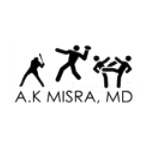Health Tips brought to you by U.S. HealthWorks Medical Group. Our experienced medical experts provide information here that we hope will broaden your health care knowledge.
Today we talk to Dr. Anuruddh Misra, a medical doctor for U.S. HealthWorks in South San Francisco, who is also double-board certified in Sports Medicine and Internal Medicine. He will discuss the dangers of norovirus.
Q: What is norovirus? What are the symptoms and who tends to get it?
A: Norovirus is an RNA virus, known by some as the “winter vomiting disease.” It was also known as the “Norwalk-like” virus after the 1968 outbreak in Norwalk, Ohio. This virus is infamous for being the most commonly implicated virus for outbreaks of gastroenteritis (vomiting, diarrhea) and is highly contagious. Norovirus outbreaks are most commonly seen in places where people tend to be closely bunched, such as nursing homes, schools, camping sites, dorms, and prisons.
Q: How long does norovirus last?
A: Typically, the clinical course is no longer than two to three days. However, it is crucial to highlight one of the most challenging aspects of this virus – a person who seemingly has fully recovered often remains contagious up to three days. This is why a return to normal-life activities is not recommended until three days after the person has recovered.
Q: How do you get norovirus, and how can someone avoid transmitting it to others?
A: There are several pivotal steps necessary to prevent transmission. A summary slide from the CDC has been provided below.
- The best prevention of person-to-person transmission is washing/scrubbing the hands for a length of time no shorter than singing the “Happy Birthday” song twice.
- The virus can spread airborne from active vomiting. It’s extremely important that acutely ill people with norovirus are isolated so others don’t contract the virus via droplet formation or aerosolization.
- It’s important to know that norovirus can easily be transmitted from surfaces such as chairs and tabletops. The virus can survive on surfaces in this fashion for up to two weeks. In the case of surface-to-person transmission, typical soaps and alcohol cleaners are ineffective. The only way to prevent transmission is to use bleach-based cleaners.
Q: How is norovirus treated?
A: Since this infection is a virus, the life cycle is thankfully limited and tends to go away in 72 hours.
As stated above, the infection can remain 72 hours past clinical resolution of an acute bout of norovirus. This is why it is crucial not to return to where one initially got sick, such as a school.
Specific treatment for norovirus is focused mainly on self-care oriented actions, such as supportive/restorative measures like rest, hydration and symptom management. If someone with norovirus continues to be significantly symptomatic beyond the 72-hour period, it’s advised to get a rapid clinical evaluation at the nearest urgent care center or emergency room (depending on severity) for further testing and treatment.
Dr. Misra was interviewed recently on the norovirus outbreak in San Jose.






